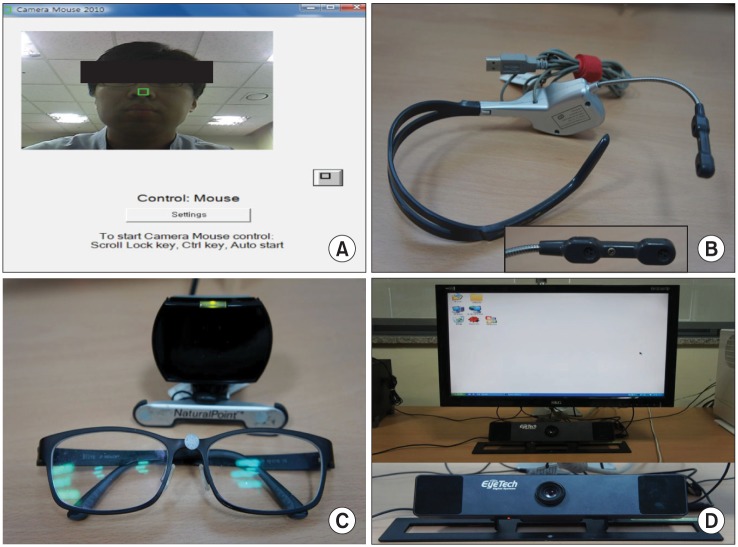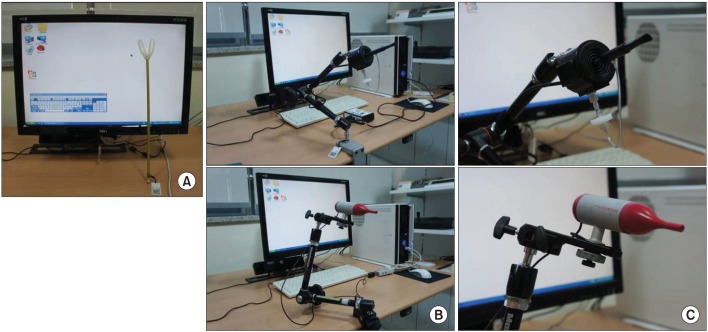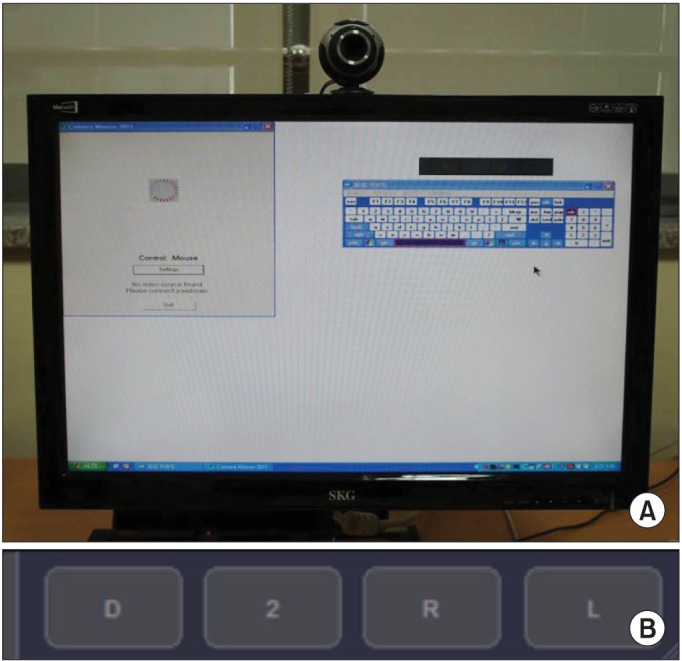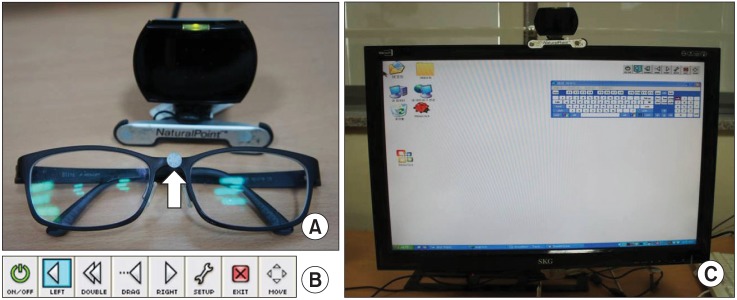Ann Rehabil Med.
2013 Jun;37(3):443-448. 10.5535/arm.2013.37.3.443.
The Selection of the Appropriate Computer Interface Device for Patients With High Cervical Cord Injury
- Affiliations
-
- 1Department of Rehabilitation, National Rehabilitation Center, Seoul, Korea. iambs@hanmail.net
- 2Research Institute, National Rehabilitation Center, Seoul, Korea.
- KMID: 2219545
- DOI: http://doi.org/10.5535/arm.2013.37.3.443
Abstract
- In order to determine the most suitable computer interfaces for patients with high cervical cord injury, we report three cases of applications of special input devices. The first was a 49-year-old patient with neurological level of injury (NLI) C4, American Spinal Injury Association Impairment Scale (ASIA)-A. He could move the cursor by using a webcam-based Camera Mouse. Moreover, clicking the mouse could only be performed by pronation of the forearm on the modified Micro Light Switch. The second case was a 41-year-old patient with NLI C3, ASIA-A. The SmartNav 4AT which responds according to head movements could provide stable performance in clicking and dragging. The third was a 13-year-old patient with NLI C1, ASIA-B. The IntegraMouse enabling clicking and dragging with fine movements of the lips. Selecting the appropriate interface device for patients with high cervical cord injury could be considered an important part of rehabilitation. We expect the standard proposed in this study will be helpful.
MeSH Terms
Figure
Cited by 1 articles
-
Comparison of the Using Ability Between a Smartphone and a Conventional Mobile Phone in People With Cervical Cord Injury
Seongkyu Kim, Bum-Suk Lee, Ji Min Kim
Ann Rehabil Med. 2014;38(2):183-188. doi: 10.5535/arm.2014.38.2.183.
Reference
-
1. Chen YL, Chen WL, Kuo TS, Lai JS. A head movement image (HMI)-controlled computer mouse for people with disabilities. Disabil Rehabil. 2003; 25:163–167. PMID: 12648006.2. Eom GM, Lee JM, Kim CS, Kong SJ, Lee BS, Lee KH. Manipulation performance and satisfaction of the computer mouse interface in the cervical spinal cord injury patients. J Korean Acad Rehabil Med. 2006; 30:230–235.3. Lee BS, Kim MS, Kim YH, Lim MH, Kim DM, Yu JA. The life of persons with C4 tetraplegia in the community residence. J Korean Acad Rehabil Med. 2007; 31:188–195.4. Betke M, Gips J, Fleming P. The Camera Mouse: visual tracking of body features to provide computer access for people with severe disabilities. IEEE Trans Neural Syst Rehabil Eng. 2002; 10:1–10. PMID: 12173734.
Article5. Kim YW. Development of headset-type computer mouse using gyro sensors for the handicapped. Electron Lett. 2002; 38:1313–1314.
- Full Text Links
- Actions
-
Cited
- CITED
-
- Close
- Share
- Similar articles
-
- Manipulation Performance and Satisfaction of the Computer Mouse Interface in the Cervical Spinal Cord Injury Patients
- Treatment of Cervical Cord Injury with Ankylosing Spondylitis: Case Report
- The Influence of Cervical Spondylosis to Acute Cervical Spinal Cord Injury
- Treatment of Cervical Cord Injury in Ankylosing Spondylitis
- Acute Spinal Cord Injury after Cervical Nerve Root Block






